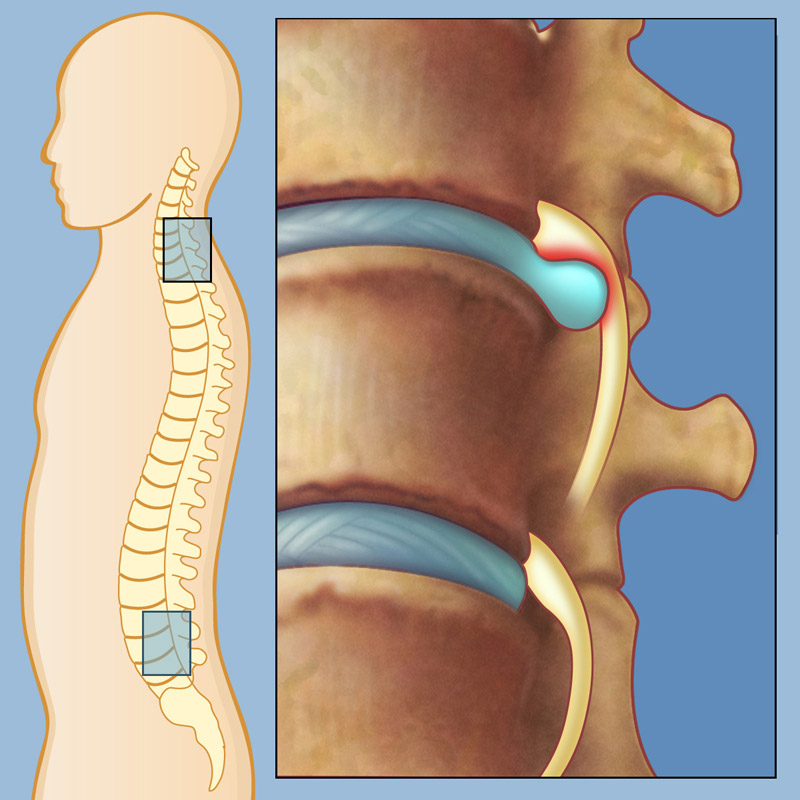Herniated Disc or slip disc

Herniated Disc or slip disc
Contact Us
Related Videos :
Frequently Asked Questions :
What is the recovery time for a herniated disc?
Recovery time varies; most patients start feeling better within a few weeks, but full recovery may take several months.
Can a herniated disc heal on its own?
Yes, many cases improve with conservative treatment over time without surgery.
What lifestyle changes can help prevent herniated discs?
Maintaining a healthy weight, practicing good posture, and engaging in regular exercise can reduce the risk of herniated discs.

About Herniated Disc
A herniated disc, also known as a slip disc, occurs when the soft inner gel of the disc protrudes through the tough outer layer. This can lead to nerve compression, causing pain and discomfort. Herniated discs are most commonly found in the lumbar (lower back) region but can also occur in the cervical (neck) region. Understanding this condition is crucial for effective treatment and management.
Causes of Herniated Disc
Several factors contribute to the development of a herniated disc, including:
- Age-related degeneration: As we age, discs lose hydration and flexibility, increasing the risk of herniation.
- Injury or trauma: Sudden impact or lifting heavy objects can cause discs to slip.
- Repetitive strain: Jobs or activities that involve repetitive lifting or twisting may contribute to disc herniation.
- Genetics: A family history of disc problems can increase susceptibility.
Types of Herniated Discs
Herniated discs can be classified into different types based on their location:
- Lumbar Herniated Disc: Occurs in the lower back, often causing sciatica.
- Cervical Herniated Disc: Occurs in the neck region, potentially causing pain or numbness in the arms.
- Thoracic Herniated Disc: Rare but can affect the upper back, leading to various symptoms.
Symptoms of Herniated Disc
Symptoms can vary based on the location and severity of the herniation, including:
- Pain: Sharp or dull pain in the affected area.
- Numbness or tingling: Often felt in the extremities (arms or legs).
- Weakness: Muscle weakness in specific areas.
- Loss of reflexes: Difficulty with coordination and balance.
Diagnosis of Herniated Disc
Diagnosing a herniated disc typically involves:
- Medical history review: Understanding symptoms and previous medical conditions.
- Physical examination: Testing reflexes, muscle strength, and range of motion.
- Imaging tests: MRI or CT scans provide detailed images of the spine, confirming the presence and severity of a herniated disc.
Treatment Options for Herniated Disc
Treatment for a herniated disc can vary based on the severity of symptoms and may include:
Conservative treatment:
- Physical therapy: Strengthening and stretching exercises.
- Medications: Anti-inflammatory drugs, muscle relaxants, and pain relievers.
- Epidural steroid injections: Reducing inflammation around the affected nerve.
Surgical options (if conservative treatment fails):
- Microdiscectomy: Removal of the herniated portion of the disc.
- Lumbar fusion: Joining two or more vertebrae to stabilize the spine.
Cost of Treatment and Stay in India
The cost of treatment for a herniated disc in India varies based on the type of treatment and hospital facility. Generally, costs may range from $2,000 to $8,000 for surgical procedures, which is significantly lower than in many Western countries. Additionally, the overall stay, including pre and post-operative care, can be budget-friendly, providing high-quality care at affordable rates.